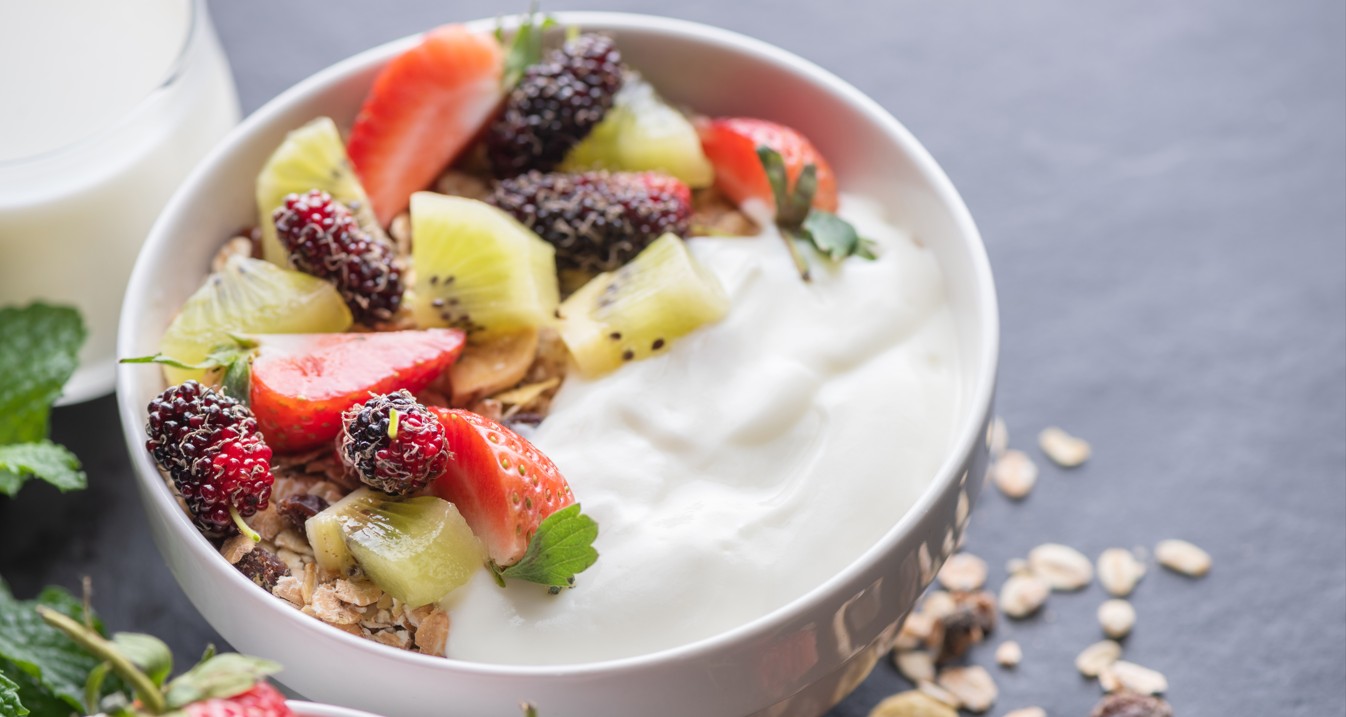From breakfast staple to kitchen star: How yoghurt is transforming Kenyan cooking

Long praised by nutritionists for its gut-friendly probiotics, calcium, and quality protein, yoghurt is now being embraced by chefs and home cooks for its versatility in the kitchen.
Long known as a breakfast staple—served plain or sweetened, often with fruit, cornflakes, or Weetabix—yoghurt is undergoing a quiet culinary revolution. That creamy fridge favourite is now moving beyond the breakfast table and into the heart of everyday cooking.
From marinades to savoury dips, yoghurt is proving it’s more than just a morning meal.
More To Read
- Discover 7 fermented foods packed with probiotics for better gut health
- Basbousa: The classic cake bringing families together
- Four irresistible breakfasts to brighten your weekend
- How to make a healthy Caesar salad at home with these simple steps
- How to bake yummy banana bread for friends and family
- How to make a nutritious Mediterranean breakfast for the whole family
Nutritionists have long praised its gut-friendly probiotics, high calcium content, and quality protein. But now, chefs and home cooks alike are discovering yoghurt’s functional value in the kitchen.
Its creamy texture, tangy flavour, and mild acidity make it a secret weapon in both sweet and savoury recipes.
"In our kitchen, yoghurt isn’t just a snack—it’s a base, a binder, a tenderiser, and even a sauce," says Nyambura Wambui, a self-taught private chef.
"We use it in everything from marinades for nyama choma to creamy salad dressings."
Tenderising and marinating
Yoghurt has long been used to tenderise meat, thanks to its natural lactic acid, which gently breaks down protein fibres and softens even tougher cuts of beef or chicken.
“Unlike harsher acidic marinades like vinegar or lemon, yoghurt tenderises without drying the meat,” Wambui explains.
Popular dishes like chicken tikka and chicken biryani—now staples in many urban kitchens—rely on yoghurt-based marinades for rich flavour and melt-in-the-mouth texture. Locally, this technique is being adapted for beef skewers, fish fillets, and even gizzards.
Dressing up salads and fruit bowls
Yoghurt-based salad dressings are gaining popularity among health-conscious consumers. Instead of buying bottled ranch dressing, you can make your own using plain yoghurt, garlic, lemon juice, and herbs like coriander.
This swap lowers cholesterol, adds beneficial probiotics, and reduces fat compared to mayonnaise-based dressings.
You can also make a simple fruit pudding by mixing mangoes, grapes, or any fruit of your choice with half a cup of yoghurt—a refreshing and healthy treat.
Cooking sauces and stews
In curries and stews, yoghurt offers creamy richness without the need for cream or coconut milk. Common in Indian-inspired recipes, yoghurt is often stirred in at the end to add a silky texture and tang.
You can experiment by adding a spoonful to ndengu (green gram curry) or even vegetable stews. For best results, stir it in off the heat or temper it slowly to avoid curdling.
Baking and desserts
Yoghurt is also a baking powerhouse. In muffins, pancakes, and cakes, it can replace oil or butter while keeping the crumb moist and fluffy.
Local bakers have embraced yoghurt banana bread—an easy way to use up overripe bananas and plain yoghurt nearing expiry.
Some dessert lovers enjoy yoghurt poured over cake, or layered with granola, mangoes, grapes, or crushed biscuits for a simple but elegant finish to any meal.
Savoury dips, spreads and ice creams
Plain yoghurt forms the base of countless dips. For instance, when mixed with grated cucumber and garlic, it becomes tzatziki—a refreshing accompaniment to grilled meats.
“If you add a bit of tahini or peanut butter, it transforms into a protein-packed spread for chapati or sandwiches,” says Wambui.
At home, toddlers can enjoy yoghurt blended with avocado or mashed banana—nutrient-rich and easy to digest. And for a sweet treat on a hot day, frozen yoghurt is a healthy and fun alternative to ice cream.
Skincare bonus: Yoghurt face mask
Beyond the kitchen, yoghurt also works wonders for the skin. Rich in lactic acid and probiotics, plain unsweetened yoghurt makes a gentle, natural face mask that exfoliates, brightens, and moisturises.
It can soothe irritation, fight acne, and leave skin feeling soft and refreshed. Simply apply to clean skin for 10–15 minutes, then rinse with water.
Yoghurt on a budget
Although flavoured yoghurt is often seen as a premium product, local brands have made plain yoghurt more affordable and accessible.
Buying in bulk is usually cheaper and healthier than sweetened varieties. And for those with access to fresh milk, making yoghurt at home has become increasingly popular in both urban and rural areas.
“I started making yoghurt to reduce milk wastage,” says farmer Michael Njoroge.
“But now, it’s part of my weekly routine. I use it in cooking and drinking almost every day.”
On his small dairy farm just outside Nanyuki, Njoroge has turned a simple preservation method into a mini-enterprise.
“When my cows produce more milk than we can consume, I ferment some into yoghurt or mala. I’ve even started experimenting with soft cheese. My grandchildren also enjoy making yoghurt ice cream—it’s a healthier alternative. Nothing goes to waste anymore.”
And his homemade dairy products serve more than just his household.
“I pack and send yoghurt and mala to my children and grandchildren in Nairobi every week. They say it tastes better than what they buy in supermarkets.”
“It started as a way to save milk. Now it connects me to my children, even from kilometres away.”
As more Kenyan households strive to eat healthier and reduce food waste, yoghurt is stepping up as a quiet champion of the modern kitchen.
No longer confined to breakfast, it has become an all-day ingredient—delicious, nutritious, and endlessly adaptable.
Yoghurt is not just how you start a meal—it’s becoming a whole new way to cook.
Top Stories Today












































